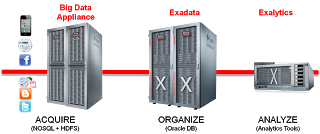Enterprise systems have long been designed around capturing, managing and analyzing business transactions e.g. marketing, sales, support activities etc. However, lately with the evolution of automation and Web 2.0 technologies like blogs, status updates, tweets etc. there has been an explosive growth in the arena of machine and consumer generated data. Defined as “Big Data”, this data is characterized by attributes like volume, variety, velocity and complexity and essentially represents machine and consumer interactions
Big data analytics lifecycle includes steps like acquire, organize and analyze. The analytics process starts with data acquisition. The structure and content of big data can’t be known upfront and is subject to change in-flight so the data acquisition systems have to be designed for flexibility and variability; no predefined data structures, dynamic structures are a norm. The organization step entails moving the data in well defined structures so relationships can be established and the data across sources can be combined to get a complete picture.
Oracle offers the broadest and most integrated portfolio of products to help you acquire and organize these diverse data sources and analyzes them alongside your existing data to find new insights and capitalize on hidden relationships. Attached diagram helps you to understand how Oracle acquire, organize, and analyze your big data.


No comments:
Post a Comment